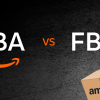AI in Fulfilment – A New Chapter for the POD Industry

Artificial Intelligence (AI) is ushering in a fresh era for the Print on Demand (POD) sector, where speed, precision, and customer satisfaction are becoming core expectations rather than optional advantages. Previously, many sellers faced delays, production inconsistencies, higher operating costs, and unpredictable service levels. Today, AI is reshaping how fulfilment is managed, offering a more responsive, reliable, and scalable operating model. This article explores how AI is redefining POD fulfilment by improving productivity, lowering costs, enhancing user experience, and supporting sustainable business growth.
From Automation to Intelligence in POD Fulfilment
Automation and AI are often mentioned together, but they are fundamentally different.
Between 2018 and 2022, large POD facilities around the world implemented various forms of automation: integrated printing lines, automated packaging systems, barcode updates, and synchronised order management. These systems removed many manual tasks and improved basic efficiency. However, automation alone is reactive it follows fixed rules and does not adapt to sudden operational changes.
During peak seasons like Q4 or flash sales, automated systems often reach their limits. They cannot redistribute workload, anticipate risks, or adjust resources in real time. This may result in order jams, printing mistakes, and delivery slowdowns.
AI changes the landscape by introducing decision-making capability. An AI-driven fulfilment network can:
- Analyse order volume and trends in real time
- Assign jobs to suitable printing lines based on current workload and SLA requirements
- Identify potential issues such as supply shortages or overloaded machines
- Issue early warnings before problems escalate
With AI, fulfilment shifts from passive execution to adaptive management, ensuring smooth operations even when order volume surges unexpectedly.
Five Real-World Applications of AI in POD Fulfilment
1. Demand Forecasting and Inventory Planning
Running out of blank garments during high-demand periods is one of the most common challenges for POD sellers. AI solves this through predictive analytics.
By studying historical performance, seasonal buying behaviours, weather trends, market activity, and upcoming events, AI can forecast future demand with high accuracy. For example, systems may detect that hoodie consumption in certain regions increases significantly from October to December due to weather changes. Based on such predictions, AI can prompt suppliers to restock fabric and ink in advance.
This ensures:
- Lower risk of stockouts
- Better warehouse utilisation
- Faster fulfilment due to constant availability of materials
2. Automated Production Allocation
In conventional print shops, job assignment is often manually coordinated. This may cause some machines to idle while others are overworked.
AI monitors machine status, queue length, operator shifts, and production speed in real time. It then distributes jobs intelligently to maintain balanced output.
Examples include:
- Sending light-coloured garment jobs to lines optimised for them
- Scheduling dark-colour items to machines equipped for white underbase processing
This creates a more streamlined workflow with fewer delays and higher throughput.
3. Quality Control Through Computer Vision
Print defects such as colour mismatch, alignment issues, or fabric wrinkles can lead to complaints, refunds, and negative reviews.
Computer Vision technology addresses this by using cameras to inspect every finished product. The system:
- Captures a photo of the production output
- Compares it to the original artwork
- Detects anomalies within fractions of a second
- Flags or removes items that do not meet quality standards
This reduces defective shipments and protects the seller’s brand reputation.
4. Smarter Logistics and Delivery Planning
The logistics segment often takes up a large portion of fulfilment costs. AI evaluates various factors such as carrier performance, weather forecasts, traffic patterns, and delivery destination characteristics. With this information, it selects routes and carriers that offer the best balance of cost, speed, and reliability.
This results in:
- More accurate delivery estimates
- Fewer delays
- Lower overall shipping expenses
5. AI-Enabled Customer Support
Sellers frequently receive repeated queries about order status, shipping updates, or basic policy information. AI chatbots integrated with fulfilment systems can respond instantly by accessing real-time order data.
Examples:
- Providing live tracking updates
- Guiding customers through exchanges or returns
- Answering FAQs without human intervention
This lightens the workload for sellers and provides customers with faster, more consistent responses.
Key Benefits of AI for POD Sellers
AI adoption in fulfilment brings several strategic advantages:
1. Faster Processing and Turnaround Times
When AI controls order routing, job assignment, and tracking, the entire process becomes significantly faster. Many orders can be fulfilled within one working day, supporting customer expectations for quick delivery.
2. Lower Operational Costs
AI reduces waste and unnecessary expenses by:
- Minimising print errors
- Preventing overstocking or understocking
- Optimising machine usage and labour hours
This helps sellers achieve better margins and more stable profitability.
3. Consistent Quality and Fewer Mistakes
AI ensures uniformity across batches by maintaining quality standards, aligning print placements accurately, and detecting early defects.
4. Scalability Without Operational Chaos
AI allows fulfilment centres to scale up capacity without proportionally increasing manpower. As the system processes more orders, it becomes more accurate and efficient through continuous learning.
5. Better Customer Experience
AI supports transparency and accuracy in both production and delivery. Customers benefit from reliable updates, faster service, and higher-quality products all essential for repeat purchases.
Challenges of Implementing AI in Fulfilment
While AI provides strong advantages, its adoption comes with several challenges that both sellers and fulfilment providers should consider.
1. High Data and Implementation Requirements
AI requires extensive, clean, and well-structured data. New facilities or small sellers may not have historical datasets large enough to train AI systems effectively. Setting up AI infrastructure such as cameras, software, machine learning systems, and engineering support may require significant investment.
2. Limitations With Unusual or Complex Scenarios
AI performs best in structured environments. When encountering special cases such as intentional distressed artwork, unexpected platform errors, or rare operational incidents human oversight is still necessary to prevent incorrect decisions.
3. Data Security and Privacy Concerns
Fulfilment providers handle design files and personal customer data. Without robust security measures, leaks or unauthorised access could lead to intellectual property risks or regulatory issues. Sellers should work with partners that follow recognised security standards and compliance practices.
4. Workforce Readiness and Training
AI is only effective when the operations team understands how to use it. Staff must learn how to interpret analytics, configure rules, and handle hybrid workflows. Without proper training, the system may not deliver its full potential.
5. Risk of Overdependence on Technology
A fully AI-driven operation must prepare contingency plans in case of system downtime. Professional fulfilment centres typically maintain backup processes or manual modes to ensure continuity during unexpected outages.
Conclusion: Moving Towards Intelligent Fulfilment
As speed, precision, and customer expectations evolve, choosing a fulfilment partner capable of integrating AI intelligently becomes a strategic decision for POD sellers. AI does not replace human expertise; it enhances operational efficiency, supports growth, and builds a more stable foundation for long-term business expansion.
With a structured approach to operations and the adoption of AI across multiple fulfilment stages, providers like MatterTee can help sellers improve turnaround time, maintain consistent quality, optimise costs, and deliver a better end-customer experience.








